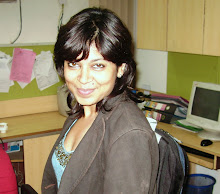I arrived in Delhi 11 years back for my higher studies and stayed on. The city has given me all from education to opportunity - it has all been a smooth sail.
A landscape of dreams indeed, on its way to being a world class city ahead of commonwealth games.
Government raised over Rs.52 billion for the 2010 Commonwealth Games as well as provision of land for stadiums and other constructions, Rs.105.71 billion for the first phase of the Delhi Metro and over Rs.10 billion for the high capacity bus corridor.
Delhi is iconic of a shining India and a thriving middle class with its shopping arcades, malls and glitzy cars doing the rounds. Add to the list the rich and mighty, the movers and shakers. Can it get fancier than this?
Now contrast this with almost 20 % Delhi’s population living in slums - the second highest slum population in India. The living conditions are worse than we can imagine without basic health and hygiene facilities. Sewage flows freely on the streets outside Sanjay Colony, one of several colonies in northwest Delhi at the edge of a large dumping ground for much of the city’s garbage which we visited. Clean drinking water is a very precious commodity. Space crunch forces even a family of five and more to share a one room accommodation and cook outside in the open with drains without cover.
It is this paradox of existence that confounds me without any plausible answer.
The national capital ‘boasts’ of doubling infant mortality in the last three years. It’s a shocking revelation on scratching the shiny surface.
They don’t have access to even basic health facilities and those that are available are far off and expensive. In effect an estimated 83 % of the urban poor mothers give birth in their homes and without skilled attendants. Women and children stand to suffer the most.
Government blames it on teeming migrating population that infest the cities.
Why do they come to the cities in the first place?
They too like many of us come in search of their dreams of better future. Agriculture is no longer a viable livelihood option for many. They land up in the city working as daily wage labour or picking up some odd jobs to eke out a living. Only that they lag far behind in keeping pace with competing dreams of those above. In this race of inequality a poor man’s dream obviously comes crashing.
Where does this reality fit in my life which is far removed from the one I saw? I guess I knew.
I felt connected to their dreams, those smiling faces of children that greeted when we entered the narrow alleyways of the colony. I felt connected to my consciousness.
I came back with a greater sense of responsibility and resolve to do the best I can to make a difference.
Looking at the urgent needs of the community, Save the Children India is providing comprehensive medical care through mobile health clinic catering especially to the needs of women and children living in the slums of northwest Delhi.
We have taken the first step. Much more needs to be done. Together we can.
